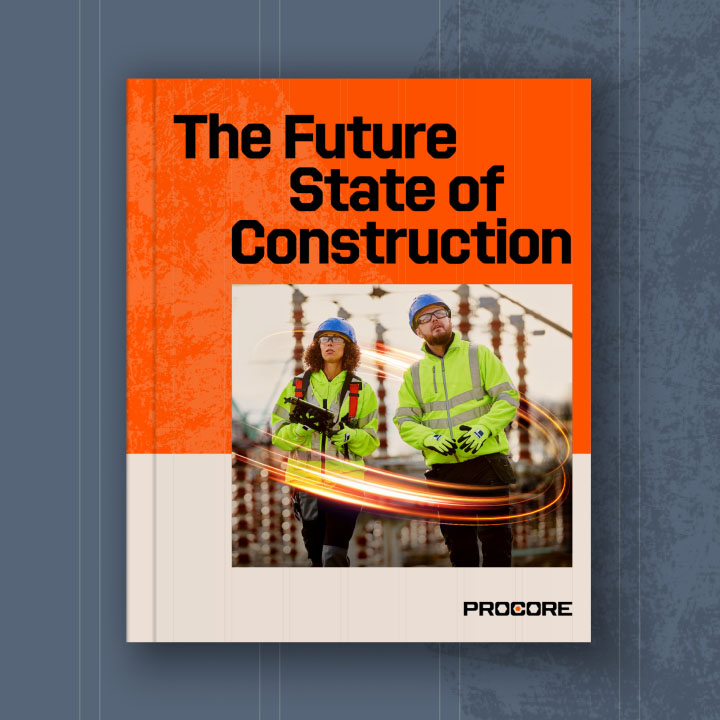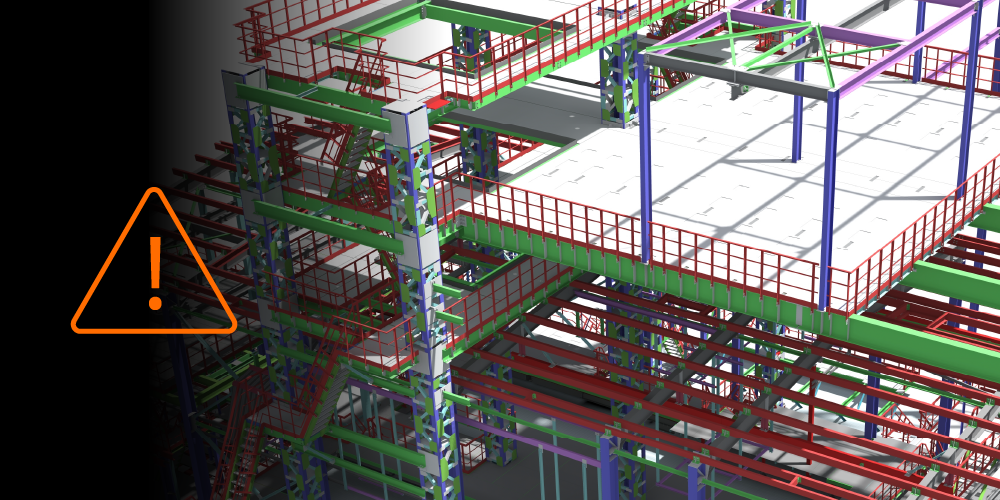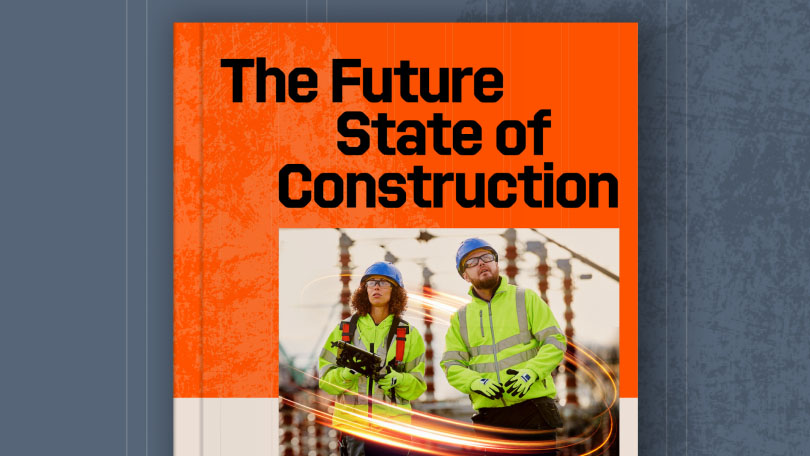Related Articles
— 7 min read
5 Types of Tendering in Construction

Last Updated Sep 10, 2025

Emma De Francesco
Strategic Product Consultant
22 articles
Emma is currently Strategic Product Consultant at Procore where she loves partnering with clients to help them achieve the best possible results. She has worked as a Project Manager in previous roles, responsible for overseeing small to medium-sized projects across various sectors including commercial, health and lifestyle, retail, government and hotels. Throughout these projects, she managed everything from project costs, program and quality & safety, to design management, procurement, and authority approvals.
Last Updated Sep 10, 2025

In the bustling Australian construction scene, developers and contractors don’t just build structures: they build connections. They do this through the tendering process whereby they seek out the perfect partners, forging relationships that lead to successful and profitable projects.
There are different kinds of competitive tenders worldwide, but the most common types of tenders used in Australia are:
- Open tendering
- Negotiated tendering
- Selective tendering
- Single-stage tendering
- ECI or two-stage tendering
Below, we'll explore the main types of tender, outlining the pros and cons of each approach.
Learn more: The Construction Tendering Process Explained
Table of contents
The 5 Main Types of Tendering in Australia
Each approach to tendering has both advantages and disadvantages that buyers need to be aware of before soliciting bids for a project.
It’s important to note that the different types of tendering aren’t necessarily mutually exclusive. For instance, a developer might put a job out to the public while also inviting a few trusted tradies to throw their hat in the ring at the same time. The process is flexible, allowing for the best match to be found, and ensuring the job’s done right.
Open Tendering
With open tendering, a developer or head contractor invites tenders from all interested contractors by publicly advertising a tender package, including construction specifications and project details. The open tender (either an invitation to tender or a Request for Proposal) is advertised in print and online to reach a broad pool of potential tenderers. This promotes fairness, transparency and competition. In response, contractors can submit tenders that present their proposed price for the outlined scope of work.
Open tendering is used in both private and public construction, though it is more common in the public sector and only rarely used on private projects. In general, open tendering tends to enhance competition, resulting in lower-priced bids. However, developers and head contractors that use open tendering often use an Expression of Interest (EOI) process in which contractors provide qualitative information to support their ability to complete the project.
Tendering on Public Projects
Public projects – those procured or funded by federal, state, or local governments and agencies – are often legally mandated to use open tendering to obtain the lowest responsive tender. The selecting agency will perform a weighted ranking of each bid based on a set of established criteria, including price and other predetermined factors.
These factors can vary by state or even by project. For example, in Victoria the agency in charge of the project establishes the criteria against which contractors will be evaluated, and all mandatory criteria must be included in the tender package.
“Value for money” is often an important ranking factor, but does not necessarily mean lowest price. It requires a balanced assessment of both financial and non-financial factors, including:
- Total benefits realised over the lifetime of the work provided
- Environmental, social and economic factors
- Risks related to the procurement
In Australia, developers who post public projects and contractors who bid on them must meet requirements laid out in the Public Contracts Regulations or other applicable regional and local laws.
Even though public procurement involves an open tendering process, project owners have an interest in ensuring that only qualified contractors apply for projects – otherwise, they could end up in a situation where the lowest tenderer is awarded the contract but cannot complete the job.
For this reason, public projects in Australia often require contractors to submit an Expression of Interest (EOI) or Prequalification Application. This process assesses contractors on factors such as previous relevant experience, CVs of essential personnel, current workload, financial stability, evidence of appropriate insurance and bonding, and adherence to Australian safety standards and ratings. The specific criteria and process may vary by state or territory, and contractors must comply with the applicable local regulations.
When a public agency receives multiple tenders, they can make an ‘apples-to-apples’ comparison and select the most competitive tender that meets the project's requirements. This results in the highest quality end product within the available budget.
For government projects, tenders and proposals are open to public review, which promotes accountability and reduces the risk of corruption or fraud.
Download the guide: 6 steps to winning a tender
Negotiated Tendering
Negotiated tendering involves a developer or head contractor negotiating directly with one bidder to determine the final price and terms of the contract. This is typically used for complex projects or projects where the owner has an existing relationship with a specific contractor.
Negotiated tendering is common in many sectors of private construction. By negotiating directly with a known partner, the buyer can streamline the tender process, avoiding lengthy negotiation, prequalification and bid levelling. During the negotiated tendering process, the buyer collaborates with the contractor to develop a realistic budget, minimising the risk of cost overruns.
On the other hand, negotiated tendering has the disadvantage of not allowing for any price comparison among various bids.
Selective Tendering
With selective tendering, the developer or head contractor invites only a select number of contractors to submit tenders.
Selective tendering tends to be the most common approach on private construction projects, often requiring a high degree of construction management or speciality trade expertise.
Contractors are invited to tender based on their existing relationship with the buyer, their performance on previous projects, or their expertise in a specific project type.
Tenders may be sought through a tender management platform to streamline the process. Larger head contractors often utilise their own prequalification process to select speciality contractors for their tender list.
Selective tendering allows for greater quality control. The buyer selects from a pool of contractors who have a proven track record of delivering a particular type of work at a high standard. Pulling from a list of trusted contractors enables the solicitor to reduce project risks and efficiently move to the next stage of construction.
On the other hand, selective tendering diminishes overall competition, which could lead to higher prices overall.
Furthermore, selective tendering with known contractors may mean that a project can commence sooner and experience fewer delays throughout the construction process, ultimately saving the buyer money.
Single-Stage Tendering
When it comes to single-stage tendering, the tender is called on when enough information becomes available for them to calculate a realistic price before the whole process begins. An invitation to tender is then sent out to prospective suppliers, and from there suppliers can submit their tender response for review.
Early Contractor Involvement
In Early Contractor Involvement (ECI), sometimes called two-stage tendering, the process is divided into two separate phases. The successful contractor of the first stage is engaged to provide advice and input on the constructability of the designs.
In the second stage, the head contractor is selected to build the project. While the first stage contractor is not guaranteed to win the second stage, they do typically have a significant advantage.
This type of tendering tends to be used for complex or large-scale projects in Australia, where exact specifications may not be known at the start and it also allows for greater collaboration between owner and contractor which allows for a more accurate cost estimation. That said, it can be a more time-consuming and costly process.
Why the Type of Tender Matters
Tendering is a vital part of the construction process and ensures that the developer receives the highest quality of work while obtaining the best value for their available budget.
Once the different types of tendering are understood, developers and contractors can select the best process to reduce risk, deliver value and maximise efficiency on their projects.
Maintaining a historic cost database of tenders can also minimise inefficiencies and risks, maximise productivity and protect profitability. Proactively approaching preconstruction, specifically the tendering process, will lay the foundation for success and ensure that the project is delivered on time, on budget and according to specifications.For builders, success equals revenue. For developers the tender type impacts overall cost and construction. Construction is a risky business, but learning which tenders to pursue and which tendering strategy to implement is vital for success for both developers and contractors on projects.
See what’s coming in construction over the next decade.
Download the Future State of Construction Report for insights, trends, and innovations shaping the industry over the next 8–10 years.

Categories:
Written by

Emma De Francesco
Strategic Product Consultant | Procore
22 articles
Emma is currently Strategic Product Consultant at Procore where she loves partnering with clients to help them achieve the best possible results. She has worked as a Project Manager in previous roles, responsible for overseeing small to medium-sized projects across various sectors including commercial, health and lifestyle, retail, government and hotels. Throughout these projects, she managed everything from project costs, program and quality & safety, to design management, procurement, and authority approvals.
View profileExplore more helpful resources

Managing Direct Costs in Construction: How Visibility Drives Profitability
Direct costs define the financial reality of every construction project. They cover the labour, materials, and equipment that drive delivery and determine profitability. But even the best-planned budgets can shift...

BIM Clash Detection: Reducing Rework, Delays, and Risk in Construction
Design clashes can be a significant hidden cost in construction, as each conflict between systems risks expensive rework, project delays, and reduced margins. BIM clash detection empowers teams to identify...

Next-Gen Job-Costing: Ready to Move? 5 Things to Consider Before You Get Started
In this three-part series, Quantity Surveyor turned Financial Solutions Specialist Clint Burgess uncovers the real-world gains for people, processes, and profits when businesses move from legacy to next-generation Enterprise Resource...

From Workarounds to Workflow: Solving Construction’s Legacy Job-Costing System Challenges with Next-Gen Tools
In this three-part series, Quantity Surveyor turned Financial Solutions Specialist Clint Burgess uncovers the real-world gains for people, processes, and profits when businesses move from legacy to next-generation Enterprise Resource...
